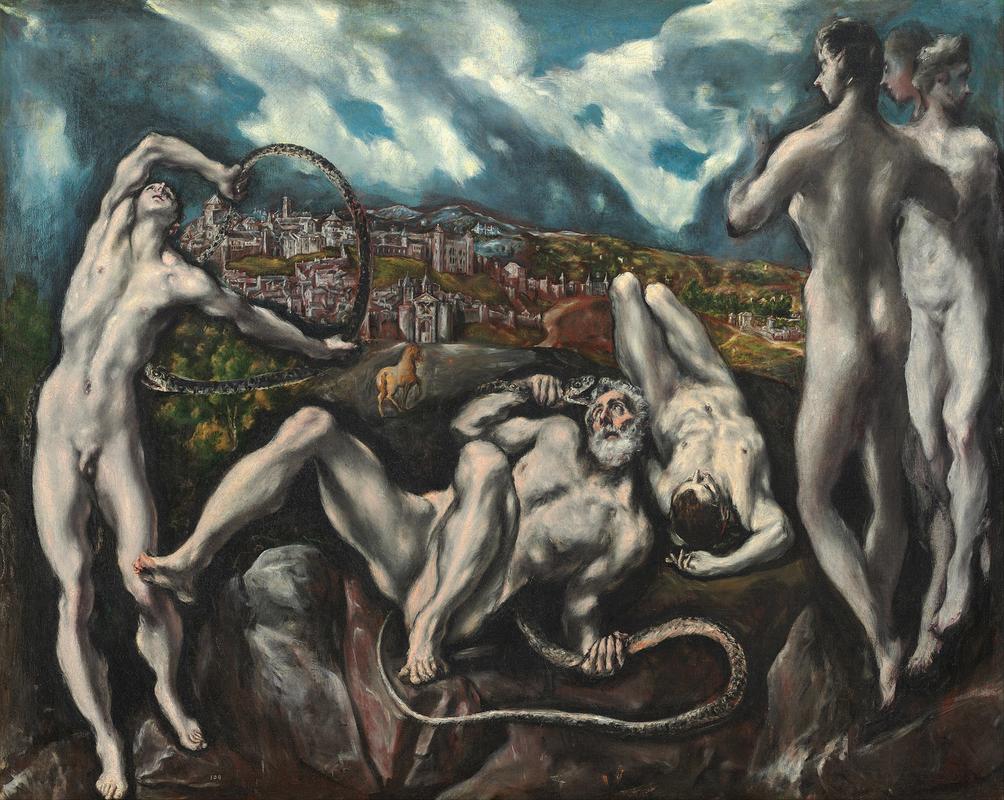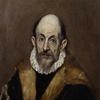More about Laocoön

Sr. Contributor
Let’s get one thing straight: El Greco was a visionary artist and did many things that none of his contemporaries even dreamed of...but he was also kind of a weird dude.
Even though it took him a long time to find a place where his art (filled with apocalyptic scenes and wiggly bodies) was appreciated, he finally settled in Spain, where he could let his freak flag fly. Unfortunately, the Spanish Inquisition had also been well underway for almost 100 years before El Greco even got there.
The Inquisition sought to Make Spain Great Again™ by establishing the country as a solely Catholic nation, wiping out any traces of an 800-year Muslim reign and the nation’s continuously growing Jewish community. Both Muslims and Jews were forced to either convert or leave the country, and as the Reformation hit, Protestants were also wiped out in favor of Catholicism. Pretty horrible stuff. Arriving in Spain in 1576 and living in his adopted country until his death in 1614, El Greco was a little too close for comfort to some of the most brutal acts of the Inquisition.
So, what does a painting of the ancient Greek myth about Laocoön have to do with the Spanish Inquisition? The Hellenistic sculpture Laocoön and His Sons was dug up in Rome in 1506, and El Greco’s remix came not too long after its discovery. The story of Laocoön is a doozy, and both the OG sculpture and El Greco’s painting focus on its gruesome ending.
During the Trojan War, Laocoön was a Trojan priest who tried to warn everyone to not accept a wooden horse full of enemy Spartan soldiers into their city. But nobody ever listens, do they? Of course not. To prove his point and show that the horse was hollow, Laocoön pierced it with a spear. But the gods, who viewed the horse as a sacred object dedicated to the goddess Athena, were like, “Oh, hell no!” and sent snakes to kill Laocoön and his sons. Then, the Spartans made it into Troy, jumped out of the horse, and killed everyone. Oopsies!
Although this painting refers to the Classical story, there are some key differences that put the tale into El Greco’s own context. El Greco actually transports the characters of the ancient myth, Laocoön and his two unfortunate sons, to his own town of Toledo, Spain. This painting has the same spooky sky and types of buildings that the artist featured in another rendition of his favorite place. El Greco also re-imagined how the scene went down. Instead of the heroic and slightly sexy Hellenistic Laocoön, El Greco shows us a Laocoön who has fallen and can’t get up.
All these weird details add up to create what some scholars think is El Greco using the myth to make his own statement about the Spanish Inquisition. No one is really certain about the connection, but this painting is El Greco’s only reference to mythology, which is important. It almost seems as though El Greco wanted to warn his fellow Spaniards to not pull a Laocoön and, even if they believed in something that could be construed as going against Catholicism, it was probably better to just keep their mouths shut.
Sources
- Christiansen, Keith. “El Greco (Domenikos Theotokopolos) (1541-1614).” The Heilbrunn Timeline of Art History. The Metropolitan Museum of Art. October 2004. http://www.metmuseum.org/toah/hd/grec/hd_grec.htm.
- Ryan, Edward A. “Spanish Inquisition,” Encyclopaedia Britannica, May 28, 2015, https://www.britannica.com/topic/Spanish-Inquisition.
- The National Gallery of Art. “Laocoon: Explore This Work.” 2016. http://www.nga.gov/content/ngaweb/Collection/highlights/highlight33253…
- The National Gallery of Art. “Laocoon: Overview.” 2016. http://www.nga.gov/content/ngaweb/Collection/art-object-page.33253.html
Featured Content
Here is what Wikipedia says about Laocoön (El Greco)
The Laocoön is an oil painting created between 1610 and 1614 by Greek painter El Greco. It is part of a collection at the National Gallery of Art in Washington, D.C.
The painting depicts the Greek and Roman mythological story of the deaths of Laocoön, a Trojan priest of Poseidon, and his two sons Antiphantes and Thymbraeus. Laocoön and his sons were strangled by sea serpents, a punishment sent by the gods after Laocoön attempted to warn his countrymen about the Trojan horse. Although inspired by the recently discovered monumental Hellenistic sculpture Laocoön and His Sons in Rome, Laocoön is a product of Mannerism, an artistic movement originating in Italy during the 16th century that countered the artistic ideals of the Renaissance. El Greco's painting deliberately breaks away from the balance and harmony of Renaissance art with its strong emotional atmosphere and distorted figures.
Check out the full Wikipedia article about Laocoön (El Greco)












